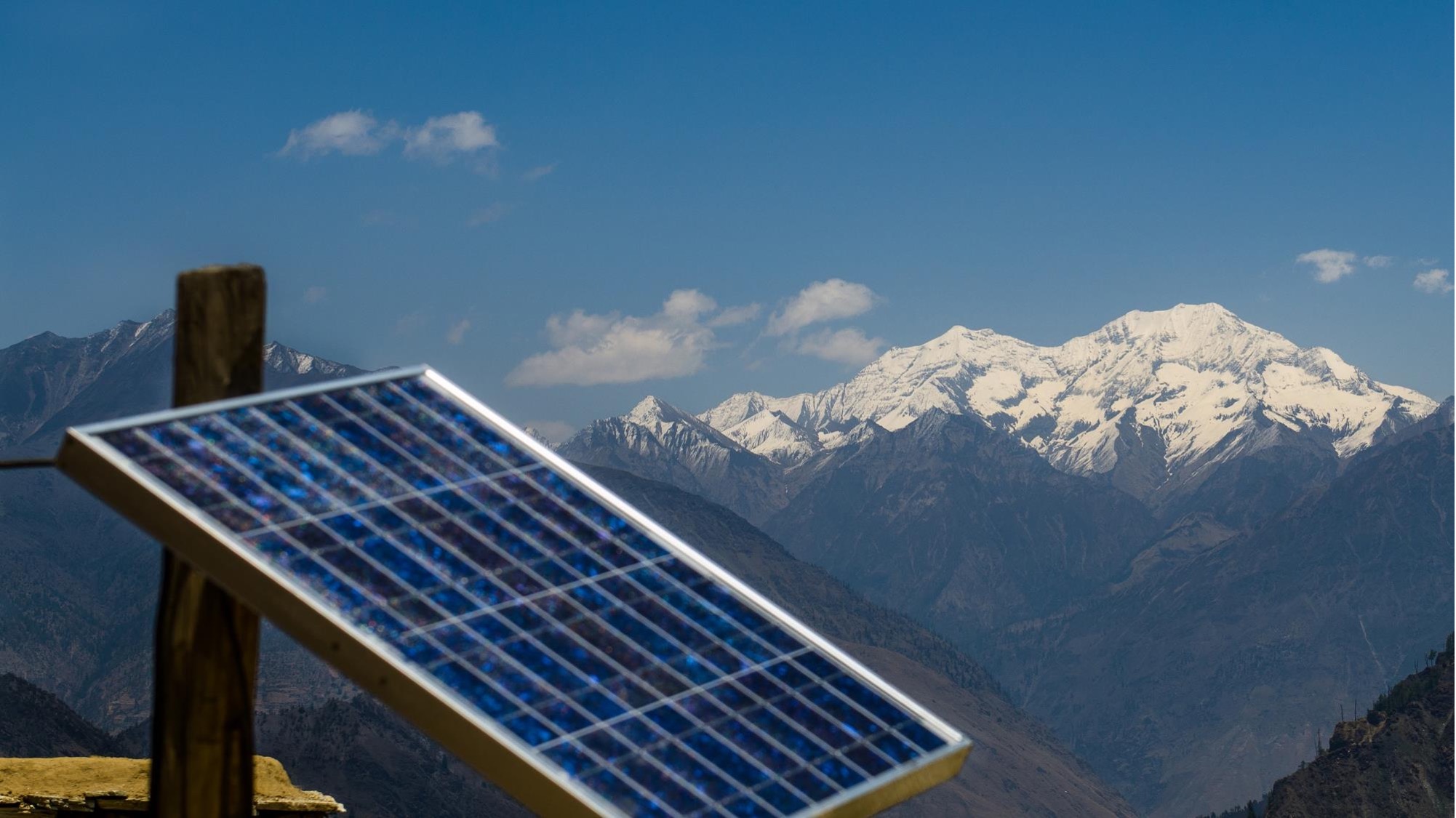A new study, based on a meta-analysis of 68 peer-reviewed publications, and the author team’s decades of on-the-ground experience, highlights the potential of sustainable hydropower, wind, and solar energy in the Hindu Kush Himalaya and the Andes to address local communities’ demands and adaptation needs while supporting broader decarbonization efforts.
This paper, featured in Mountain Research and Development Open Issue 43.1, is an output of an MRI Synthesis Workshop ‘‘Renewable Energy Transitions: Comparative Assessment in the Hindu Kush Himalayas, Andes and Alps” and was also supported by the International Centre for Integrated Mountain Development (ICIMOD), Himalayan University Consortium; and the Maurice K. Goddard Chair endowment at Pennsylvania State University.
“Mountain communities around the world have incredible natural resources and human capital that increasingly must play crucial climate adaptation and mitigation roles through decarbonisation. Yet, communities’ own needs for energy, a healthy environment, and cultural preservation must be met while they support broader energy transition efforts. This paper shows some of the opportunities and limits in these transitions.” – lead author Chris Scott
Scott emphasized that small-scale hydropower, a quintessential mountain source of energy, is a necessary but not sufficient component of energy transitions that are people-centred. Solar and wind as complementary renewable electricity sources, together with sound use of biomass and other mountain community sources of energy, all play crucial roles in meeting local needs while supporting broader decarbonization efforts.
Abstract
This paper examines progress and limitations in the transition from current dependence on carbon-based energy toward clean renewable, and socially just energy in the Hindu Kush Himalaya and the Andes. Focusing on electricity production from sustainable hydropower, solar, and wind energy, the meta-analysis does not cover biomass energy, although this is recognized to be an important energy source in these regions. A set of 68 peer-reviewed publications was reviewed to systematically address 2 research questions: (1) Which electricity generation options in mountains can address local demands and adaptation needs while supporting broader decarbonization efforts? (2) What technical innovations, policy, and governance mechanisms can aid this transition? Considering governance, finance, individual and collective action, and science and technology dimensions of the transition challenges, recommendations for policymakers, mountain communities, and practitioners are made. These include setting up clear and effective policy measures, programs, and incentives to support energy transition plans and help mountain communities and energy practitioners to fully embrace the transition. Strong political commitment supported by international cooperation for a transition agenda centred on mountain people will enable community participation, stimulate technological innovation, and establish mechanisms to monitor and enforce social and environmental impact remediation.
Paper Highlights
- Adaptation to climate impacts and carbon mitigation through renewable energy technologies are linked and can address local needs in mountain regions.
- Hydropower has the greatest potential for the clean renewable energy transition in mountains but requires significant investment and measures to address social and environmental impacts.
- Wind energy has considerable opportunities for growth in mountain regions, but climate and extreme-event impacts, grid connection problems, and environmental impacts on wildlife pose challenges.
- Solar photovoltaics show major promise in terms of price and scalability, but landscape impacts and the need to address the environmental risks of disposing of hazardous materials must be addressed.
- The transition to renewable electricity production in mountain regions requires technical innovation, regional cooperation, and robust political commitment to public-private partnerships, equity between upstream and downstream communities, and transboundary river agreements for energy pricing and financial support.
The authors include recommendations for policymakers, mountain communities, and practitioners to address transformative energy transitions in the mountains, in line with levers identified by the UN for achieving Sustainable Development Goal 7, which include governance, finance, individual and collective action, and science and technology.
Keywords
energy transition; climate change; hydropower; renewable electricity production; mountain development
Citation
Christopher A. Scott, Sarala Khaling, Padmendra P. Shrestha, F. Sebastián Riera, Kinley Choden, and Kasvi Singh “Renewable Electricity Production in Mountain Regions: Toward a People-Centered Energy Transition Agenda,” Mountain Research and Development 43(1), A1-A8, (2 May 2023). https://doi.org/10.1659/MRD-JOURNAL-D-21-00062
Cover image by Uttam Babu Shrestha


